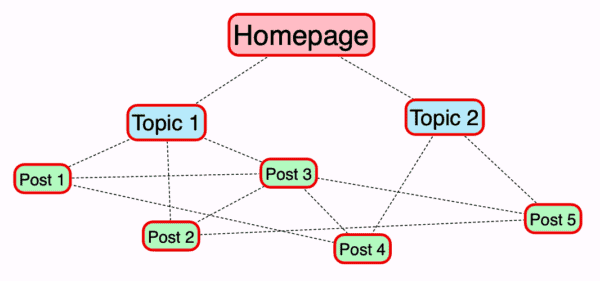Create Fewer Strong Articles or Multiple Articles?
Google’s John Mueller was asked a question about creating keyword-targeted content. The question answered in the Search Engine Journal, is about keyword targeting and if all the related keywords should be included in an article targeting the one main keyword or if those additional keywords should be split off to target those keywords individually.

John Mueller replied that:
“You can do it, either way, it’s more of a strategic decision, I think. In general, what you are balancing is making pages that are specific for individual topics and making pages that are more general but where you have fewer pages. So you’re kind of balancing many pages versus fewer pages. And if you have fewer pages, generally those few pages tend to be a little bit stronger.
Whereas if you have a lot of pages then it’s like the value is spread out a little bit more.
So if there are specific topics where the competition is stronger then you want to have very strong pages, so maybe fewer pages.
If you are targeting areas where the competition is not so strong then maybe having more pages is fine.
So that’s kind of the balance that you would try to take there.
If you’re starting out, probably having fewer pages is a good idea so that you can be as strong as possible in that area. And then over time as you see like we’re very good here, you can split off individual pages for more niche topics.”
How to Make Google Prefer the Important Content
The initial question was followed up with another one, this time asking that if the developer builds all this content how can he make Google give priority to their most important content with the transactional intent? His answer:
“You can’t give any priority for them but you can help with internal linking. So within your website, you can really highlight the pages that you want to have highlighted more and make sure that they’re really well-linked internally.
And maybe the pages you don’t find that important make sure that they’re a little less well-linked internally. Usually, with internal linking you can think of it as the important pages you would have linked from your home page and the less important pages are linked from like a category or subcategory page, something like that.
So that when we look at your site we see, oh the home page is very important and the home page points at these five pages, so these five pages are almost as important as the home page and then from there kind of the value is spread out.
And that’s kind of the way that you can help us to figure out which pages you think are important. It doesn’t mean we will always follow that. But it’s a good way to give that kind of information.”
Many publishers have an important page for conversions and less important pages that are more informational that might drive traffic back to the more important page. But sometimes things go sideways and Google might begin preferring the less important page.
As John Mueller indicated, internal linking patterns are one way to give Google a clue about which page is more important. And if those important pages are difficult to obtain external links into them then the less important pages can serve as link magnets that attract links to themselves and then link back to the important pages. That way the internal linking continually points to the important page in support of it.





